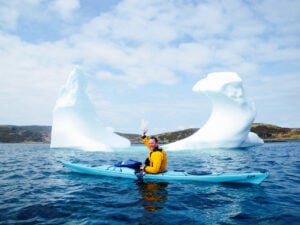We all know that looks can be deceiving, but what you see is what you get. It’s a paradox on full display when you drive to the bottom of Magnetic Hill, an unassuming country road located 15 minutes outside of Moncton, N.B. Cars in neutral gear are simply not supposed to effortlessly roll up a hill. Yet, in defiance of gravity, that’s exactly what happens. Take your foot off the brake, and your vehicle will start to roll, increasing in speed as you approach the top of the road.
Experiencing this undeniable “what the heck?” moment has attracted visitors to Magnetic Hill since the 1930s when the quirky phenomenon first captured public attention. Back then, this 15-hundred-metre stretch of road was part of the provincial highway, but thanks to press coverage and some savvy marketing, it quickly became one of the biggest draws to the region.
According to Canada’s Historic Places, Magnetic Hill remains one of the top three most visited natural attractions in the country. These days, visitors turn off the Trans-Canada Highway and follow the signs to the very epitome of a roadside attraction. As your car, or anything else on wheels, for that matter, coasts up the hill, let’s look at how Magnetic Hill actually works.
Watch Robin roll up Magnetic Hill





